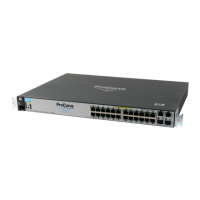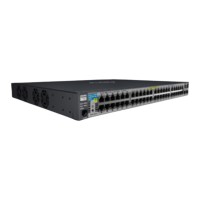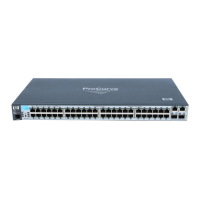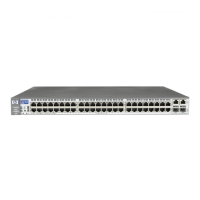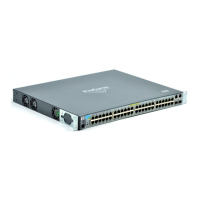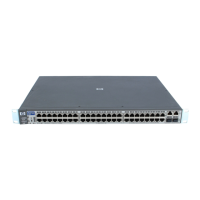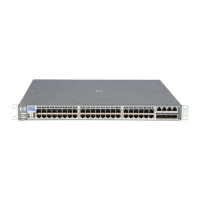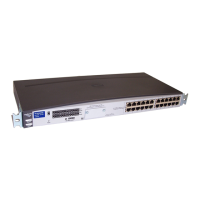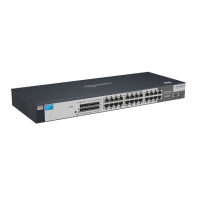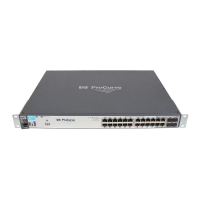Port Status and Basic Configuration
QoS Passthrough Mode
optimized: Consists of two queues; a smaller queue for protocol
packets and a larger queue for all other traffic.
typical: Consists of four queues consisting of a large queue for
normal traffic and small queues for protocol and low priority
traffic. This is the default configuration.
For example:
ProCurve(config)# qos-passthrough-mode
Command will take effect after saving configuration and
reboot
ProCurve(config)# write memory
ProCurve(config)# reload
This command can be enabled and disabled only from the switch's CLI. QoS
Passthrough Mode cannot be enabled or disabled through either the switch's
menu or web browser interfaces.
Once enabled, this feature adds qos-passthrough-mode to the switch’s startup-
config file. For example, in an otherwise default configuration, executing show
config lists the startup-config file (with QoS Passthrough Mode enabled) as
follows:
ProCurve(config)# show config
Startup configuration:
; J9085A Configuration Editor; Created on release #R.11.XX
hostname "ProCurve Switch 2610-24"
snmp-server contact "George"
qos-passthrough-mode
snmp-server community "public" Unrestricted
vlan 1
name "DEFAULT_VLAN"
untagged 1-28
ip address dhcp-bootp
exit
ip default-gateway 15.255.152.1
Indicates QoS
Passthrough mode
Figure 10-13. Example of the Startup-Config File Listing with QoS Passthrough Mode Enabled
10-27
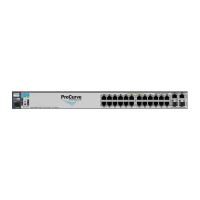
